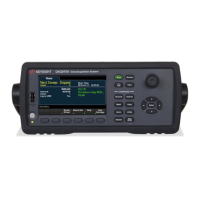T/C Type Post (+) Lead Neg (-) Lead Temperature Range Probe Accuracy Comments
S
U.S.
British
DIN
Japanese
French
Platinum -10% Rho-
dium
Black
White
Red
Red
Yellow
Platinum
Red
Blue
White
White
Green
-50 °C - 1760 °C ±0.6 °C - 1.5 °C Low error, good sta-
bility.
High temperature.
Beware of con-
tamination.
Do not insert
T
U.S.
British
DIN
Japanese
French
Copper
Blue
White
Red
Red
Yellow
Constantan
Red
Blue
Brown
White
Blue
-200 °C - 400 °C ±0.5 °C - 1 °C Withstands moisture.
Has a copper lead.
Low temperature applic-
ations.
Constantan = Copper-Nickel; Nicrosil = Nickel-Chromium-Silicon; Nisil = Nickel-Silicone-Mag-
nesium; N/A = Not Available
Sources of Error in Thermocouple Measurements
Reference Junction Error
A thermocouple is typically formed by welding or soldering two wires together to make the junction. Sol-
dering introduces a third metal into the junction. Provided that both sides of the thermocouple are at the
same temperature, the third metal has little effect.
Commercial thermocouples are welded using a capacitive-discharge technique. This technique is used to
prevent overheating of the thermocouple wire near the junction and to prevent the diffusion of the welding
gas and atmosphere into the thermocouple wire.
A poor weld or bad solder connection can also cause errors in a thermocouple measurement. Open ther-
mocouple junctions can be detected by checking the resistance of the thermocouple. A resistance meas-
urement of more than 5 kΩ. typically indicates a defective thermocouple. The DAQ970A contains a built-in,
automatic thermocouple check feature. If you enable this feature, the instrument measures the channel res-
istance after each thermocouple measurement to ensure a proper connection.
Keysight DAQ970A User's Guide 191
4Measurement Tutorials

